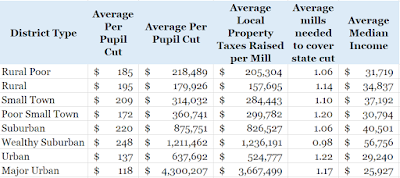I know there's been lots of commentary and news coverage of vouchers lately.
However, I don't want anyone to forget about the massive charter school program we still have in this state.
Just because ECOT is gone doesn't mean our charter school problem is.
I'm going to post a bunch of charts for you to look at. In short, here's what they show:
- This past school year was the first time in five years that charter school enrollment and the number of charter schools in operation increased over the previous year
- This school year, 606 of Ohio's 612 school districts lost at least some funding to Ohio's charter schools -- that's a record 99 percent of school districts.
- This past school year was the first time in three years that the state funding to charters eclipsed $900 million
- Meanwhile, per pupil funding to charters has steadily increased every year since 2013, largely remaining unabated despite fewer students attending charters, with a record $8,393 per pupil this year, compared with the $4,846 in state aid kids in local public schools receive.
- Likewise, a record $2.8 million per charter building was paid out this school year
- More than $400 million in local tax dollars had to subsidize charter schools this last school year because the state funding to them was so much more than kids in lcoal public schools receive
So while the fallout from the historic charter school reforms from House Bill 2 and the collapse of ECOT led to definite movement down in terms of numbers of charter schools and enrollment in them, those trends started reversing this year. And despite those downturns, per pupil and building funding kept marching up and up.
However, because of COVID, expect the enrollment and funding trends to continue going up. Why? Because the state won't be issuing a report card for this year and perhaps next year, though we'll see.
That will mean that charters in danger of closing for persistent academic failure will have at least a 2, maybe 3 year reprieve. Liekwise, charter sponsors in danger of losing their ability to run charter schools will receive a similar reprieve.
So that means that charters won't be closing as frequently (though COVID may force clsoures for non-academic reasons, and, in fact, that's why all but 52 of the 307 Ohio charter schools have closed over the years).
And need I remind everyone how poor charter school academic performance has been relative to local public schools.
So while vouchers deserve much of our attention, don't sleep on the budget hog that continues to be Ohio's Charter Schools. They remain a concern and drain on Ohio's state budget and kids' educational opportunities.
















